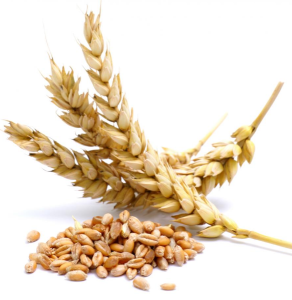How to Invest in Wheat
 How to Invest in Wheat
How to Invest in Wheat
Wheat is one of the most important global agricultural commodities, as this resource is a dietary staple in both developed and emerging markets. Because it is used so widely in the production of food, wheat has appeal as a hedge against inflation.
Wheat prices have shown significant volatility historically, as the supply side of the equation is subject to significant disruptions from extreme weather or other natural disasters. Wheat demand can also fluctuate depending on the health of the global economy.
There are a number of options for investors seeking out wheat exposure; in addition to the liquid futures market, multiple exchange-traded products are available.
Ways to Invest in Wheat
There are 3 ways to invest in Wheat: ETFs, Futures, and Stocks. Click on the tabs below to learn more about each alternative.
What are Wheat ETFs?
There is currently one U.S.-listed ETF that offers a pure play on wheat, the Teucrium Wheat Fund (WEAT). This product offers exposure to multiple wheat futures contracts and features a unique roll methodology that helps the fund mitigate the negative impact of contango.
There are two options for U.S. investors: the iPath Dow Jones-UBS Grains Total Return ETN (JJG) and the ELEMENTS MLCX Grains Index ETN (GRU). While wheat futures make up a port of the related indexes, these products also offer exposure to corn and soybeans. Though JJG is significantly bigger in terms of AUM, both ETNs show impressive liquidity.
Investors should understand that these ETNs offer exposure not to spot commodity prices, but to futures-based investment strategies. Moreover, it should be noted that JJG and GRU are structures as exchange-traded notes, meaning they are subject to credit risk of the issuers.
What are Wheat Futures?
There is a very active market for wheat futures on the Chicago Board of Trade, where these contracts trade under the symbol W (under the symbol ZW on the CME Globex). CBOT wheat futures contracts represent 5,000 bushels, or about 136 metric tons. The deliverable grade is #2 Soft Red Winter, with #1 Soft Red Winter deliverable at a 3 cent premium and certain other deliverable grades as well.
The contract months for CBOT wheat futures are March (H), May (K), July (N), September (U) and December (Z), and the last trading day is the business day prior to the 15th calendar day of the contract month.
How to Buy Wheat Stocks
For some commodities, such as precious metals, it is possible to gain indirect exposure through an investment in companies that are engaged in production or extraction. Because there are no publicly traded companies focused exclusively on growing and selling wheat, this strategy is not particularly effective when it comes to this commodity.
There are, however, some options available. Many agribusiness firms provide products and services to farmers, and the profitability of these companies often shows a correlation to agricultural spot prices. Some of the largest agribusiness firms include Potash (POT), Monsanto (MON), and The Mosaic Company (MOS). Investments in these stocks will not mirror movements in wheat prices, but can be an effective way to play strength in this commodity market.


